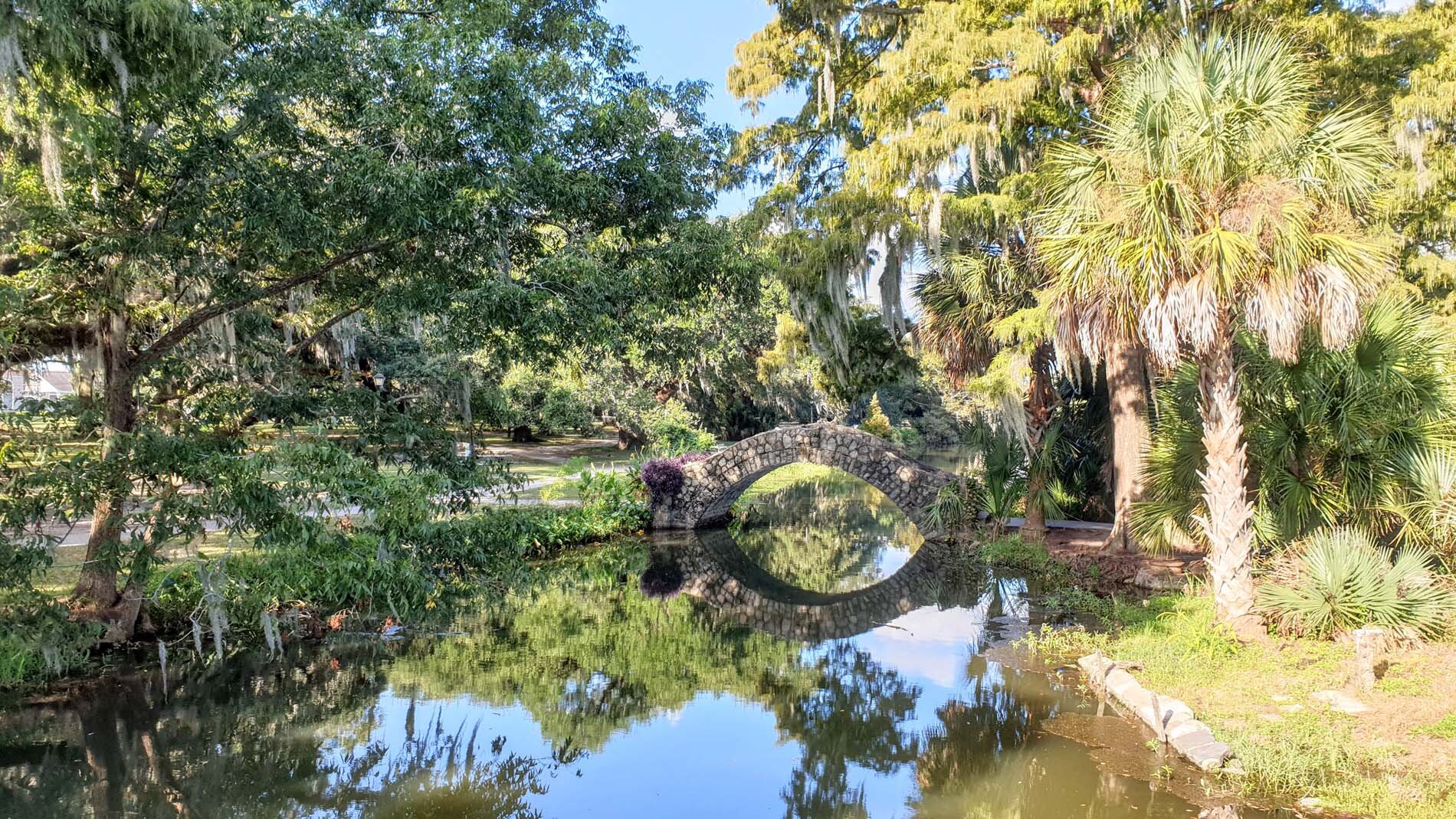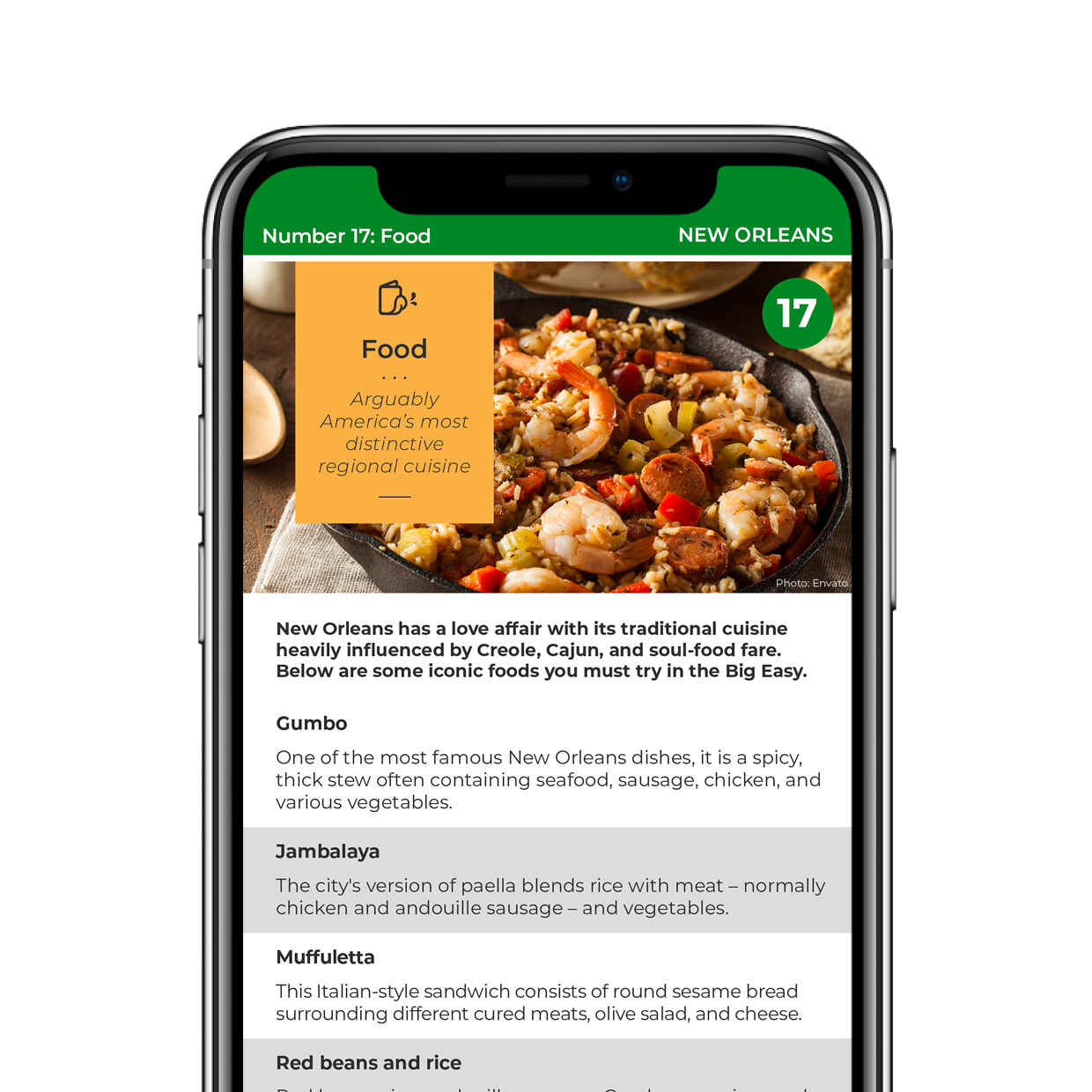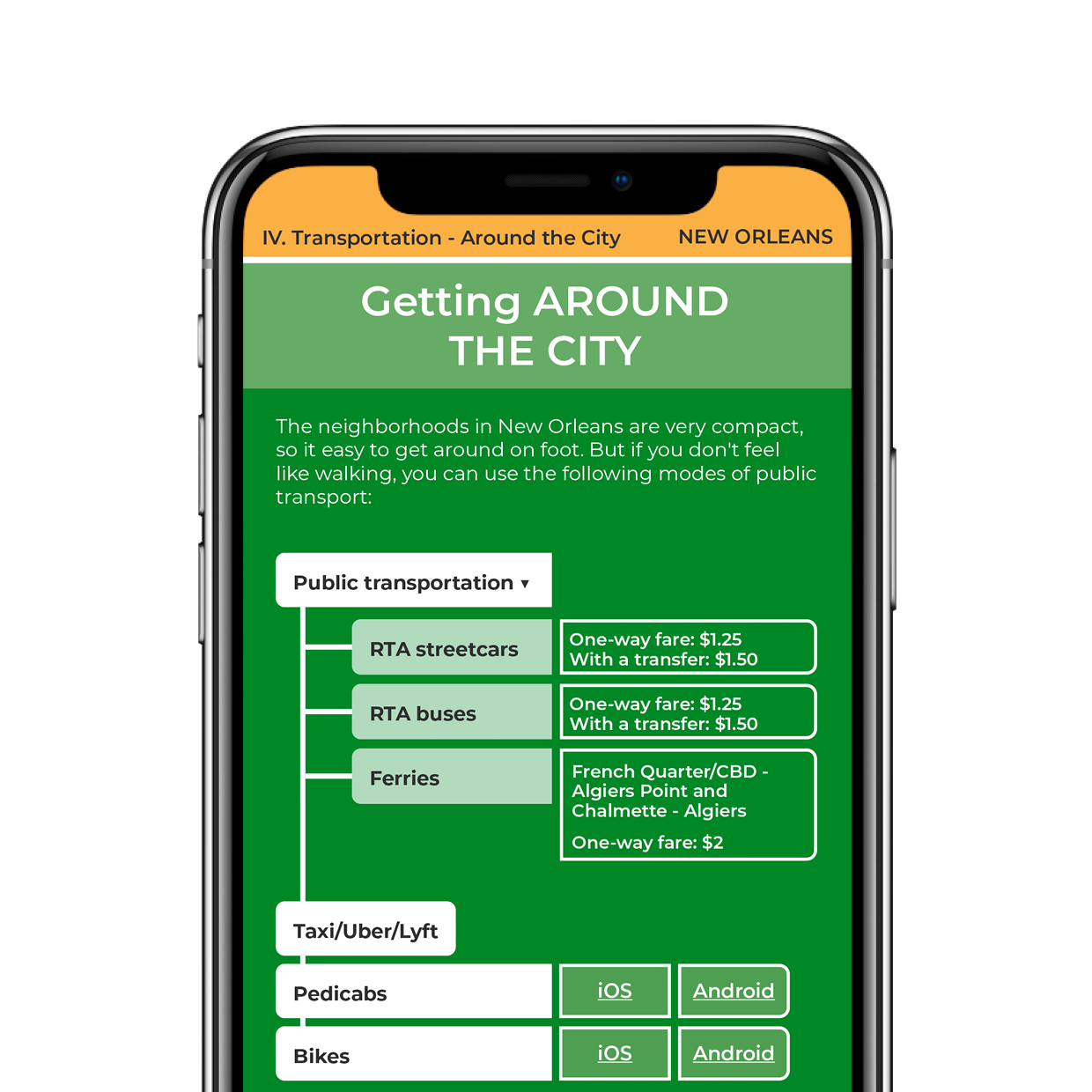Top 10 Things to Do in New Orleans
Founded by French explorers in 1718, New Orleans was the territorial capital of French Louisiana before it was sold to the US in the Louisiana Purchase of 1803. In this article, we’ll show you 10 best things to do in NOLA.
NUMBER 10: BOURBON STREET, FRENCH QUARTER
Known as “the Crown Jewel of New Orleans”, the French Quarter is a high-energy neighborhood known for its rich history, colorful buildings, fine art galleries, and vibrant nightlife.
Located in French Quarter, you’ll find the famous Bourbon Street, named after the House of Bourbon, the royal family ruling France at the time. Here you’ll find traditional Cajun restaurants, cocktail bars such as the 200-year-old staple Old Absinthe House, street musicians, and famous jazz clubs. Drinking alcohol on the street is legal in New Orleans, in fact, it’s the norm on Bourbon Street. Many bars here are actually just tiny spaces where you can get all types of drinks, which vendors sling in plastic “go-cups”.
The French Quarter and Bourbon street are one of the main venues for Mardi Gras, also known as Fat Tuesday, taking place 47 days before Easter. Watch the carnival from Bourbon balconies and throw beads on the parade-goers.
New Orleans is also famous for voodoo, so be sure to check out Marie Laveau’s House of Voodoo in the neighborhood. Learn more about Louisiana’s voodoo culture in our travel guide.
Walk along Royal Street, or go on a Mississippi river cruise, and further discover the unique French Quarter.
NUMBER 9: JACKSON SQUARE, MISSISSIPI RIVER
Also located in the French Quarter, this public space spanning 2.5 acres gets its name from the bronze statue of Andrew Jackson. With more than 2 million local and international visitors ever year, it serves as a venue for public events, weddings, and photo shoots, and has been a filming location for several movies and TV shows.
Jackson Square, which has retained its original Parisian landscape design, features iron fences, walking paths, and benches. It is also home to the Cabildo, a local history museum; street performers; and an outdoor art colony where artists create their pieces and display them on the iron fences. You can even buy the artists’ works, or even have one of them draw your portrait.
From Jackson Square, you can admire the majestic St. Louis Cathedral, the oldest cathedral in North America.
And continue to explore the charming, open-air French Market, which is the oldest of its kind in the United States. See modern boutiques and cocktail bars blending with antique stores and old restaurants or ride a traditional New Orleans carriage for a laid-back tour of the area.
You can also sit back, relax, or stroll along Moonwalk Riverfront Park and watch ships floating on the adjacent Mississippi River, or visit the nearby New Orleans Jazz National Historical Park created to celebrate the origins and development of jazz.
NUMBER 8: CITY PARK
City Park has been a part of New Orleanians since 1854 and is among the oldest and most beautiful urban parks in the country. This 1,300-acre green space offers something for everyone, from multiple gardens to an amusement park.
Smell the roses in the Botanical Garden or view the French and American pieces at the Museum of Art and the sculptures in the open-air Besthoff Sculpture Garden. And don’t forget to check out the world's largest grove of mature live oaks.
If you sit under the impressive Singing Oak located by the Big Lake, you will hear a coordinated tune created by wind chimes hanging from the tree.
Also, don’t miss the Duelling Oak and charming Langles Bridge, one of the most photographed spots in the park.
NUMBER 7: GARDEN DISTRICT
The Garden District is best known for its grandiose mansions and elegant landscaping, creating an atmosphere very different from the French Quarter's hustle and bustle. You should take some time to just walk around and admire the architecture and details that distinguish mansions from each other.
And while you’re in the area, you can visit the Garden District Book Shop in The Rink Shopping Center, and Commander's Palace, one of the most reputable Creole restaurants in the city.
Just across the street, you’ll find the above-ground graves at Lafayette Cemetery No. 1, which is among New Orleans' most historic and beautiful cemeteries. Did you know that graves are built above the ground in New Orleans to address the very high-water table and unpredictable flooding in the city?
There are other interesting cemeteries in New Orleans. Check out our travel guide for more suggestions.
NUMBER 6: LOUIS ARMSTRONG PARK
Honoring the jazz legend Louis Armstrong, this 32-acre (130,000 m2) public park is famous for its entrance arch, sculptures, duck ponds, and open spaces. Here you’ll find various buildings, such as the New Orleans Municipal Auditorium and the Mahalia Jackson Theater for the Performing Arts.
Located inside the park is Congo Square, where African slaves and free Creoles gathered on Sunday afternoons throughout the 19th century to sell food and other goods, perform rituals, dance, and play their traditional instruments. The music they created laid the groundwork for jazz, making the square one of the most significant places in the history of music.
NUMBER 5: JAZZ
Speaking of jazz - with its intertwined European, Latin American, and African-American cultures, New Orleans has always been an important center for music. The city is especially known for its strong association with jazz and is universally regarded as the birthplace of the genre. If you're visiting in late April or early May, don't miss the annual Jazz & Heritage Festival, also known as Jazz Fest. Check our travel guide for more information on this and other festivals.
But don’t worry if you can’t make it to the festival, you can get your jazz fix at one of many clubs in the city.
Visit one of many notable music and jazz clubs, like The Jazz Playhouse by Sonesta New Orleans, featuring the city’s most talented jazz musicians, as well as unique appetizers and cocktails inspired by the local jazz culture.
There are many other jazz clubs like Preservation Hall or Fritzel’s European Jazz Club. Check our travel guide for more suggestions and other jazz clubs in New Orleans.
NUMBER 4: CANAL STREET
A major road in New Orleans, Canal Street serves as the French Quarter’s upriver boundary, separating the colonial-style neighborhood from the modern Central Business District.
Creoles lived in the French Quarter until the early 1800s, but other ethnic groups found their way into New Orleans through the Mississippi River after the Louisiana Purchase in 1803. Many Americans from Kentucky and states in the Midwest moved into the city and lived uptown. A canal was planned to form the dividing line between the Creole and American populations, but in the end, a street named “Canal” was built for this purpose.
The Canal Street median was then called “neutral ground”, a symbol of the cultural divide. Today, all street medians in the city are known as neutral grounds.
Enjoy the view of the traditional streetcars are a charming and convenient way to experience the many areas of New Orleans.
NUMBER 3: ART
There's art wherever you go in New Orleans. Walking around, you'll find not just historic architecture, but also different forms of public art like sculptures and murals. Local organizations, including the Arts Council of New Orleans and the NOLA Mural Project, have helped the arts thrive and inspire people in the city. Street art, in particular, has become a prominent element of the local landscape. Browse the shops in the French Quarter or visit Jackson Square for local artists.
For galleries, head to Uptown's Magazine Street or the Arts/Warehouse District home to BMike's Studio Be, an abandoned warehouse turned grand art space. Learn about black history, civil rights leaders, Hurricane Katrina, and contemporary culture through the flamboyant installations and massive murals at this art sanctuary.
NUMBER 2: OAK ALLEY PLANTATION
Plantations play a vital role in the history of the Southern United States, specifically the pre-American Civil War era.
The fertile soils, mild subtropical climate, and abundant rainfall in the region, along with extensive African slave labor, allowed farming estates such as Oak Alley Plantation to thrive.
Formerly a sugarcane plantation, Oak Alley includes a Greek Revival-style main house with 28 colossal, free-standing columns. It is also home to a 300-year-old double row of giant oak trees forming an 800-feet-long alley, which gives the plantation its name and photogenic fame. Other points of interest are the Slavery Exhibit, the Sugarcane Exhibit & Theatre, a blacksmith shop, and a civil war tent.
There are many other plantations to visit nearby. Check our travel guide for more suggestions.
NUMBER 1: SWAMP TOURS
Head outside New Orleans to explore Louisiana's intricate network of swamps that are home to unique flora and exotic wildlife. Admire Spanish moss and cypress trees, see alligators, turtles, wild boar, nutria, raccoons, cranes, and many more all just a few feet away from you.
We headed to Pearl River for a 2-hour guided boat tour and experienced the swamp first-hand. We came across alligators, raccoons, and other animals that live in the river and the swamps.
Hungry for More? Get our New Orleans TRAVEL GUIDE for only $4.99.
There are many other things to discover in New Orleans. Check our travel guide for more information. Our travel guide is a mobile-friendly .pdf document that you can store on your phone for offline use. It covers the top 10 things to do in New Orleans, plus 10 additional attractions, maps, links, opening hours, and other information that will help make your trip to New Orleans stress-free.



















